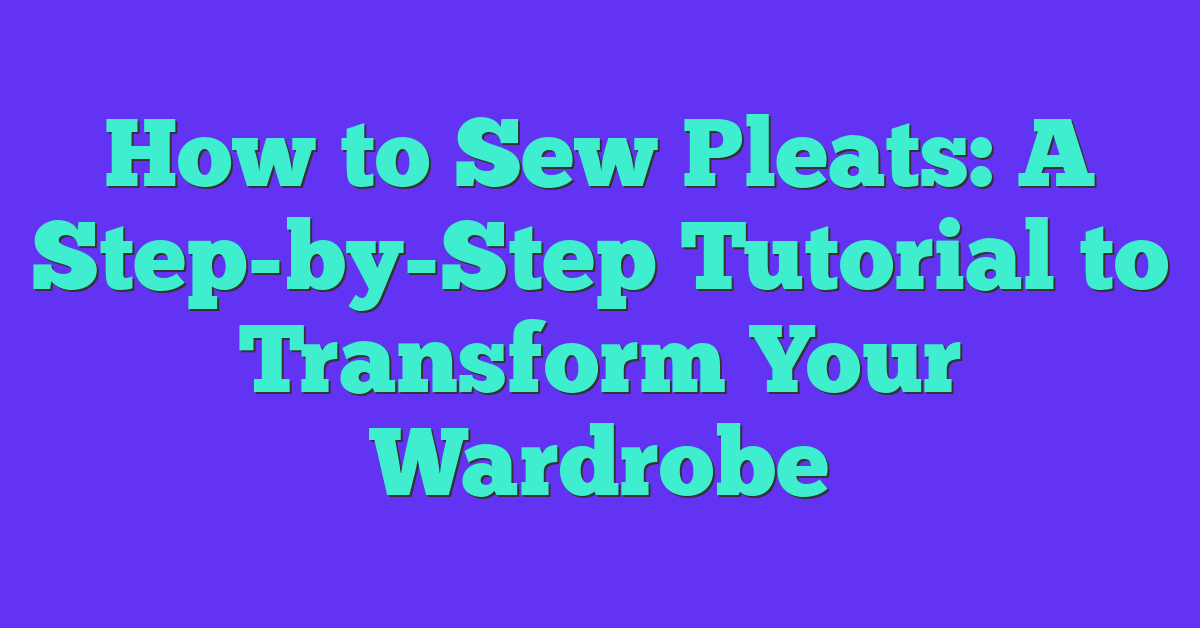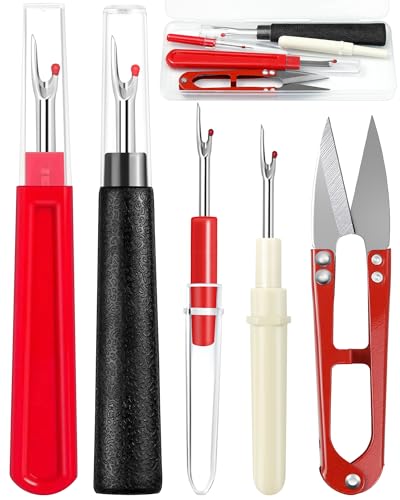Sewing pleats might seem tricky at first, but I’m here to make it easy for you. Whether you’re updating a skirt, dress, or any other garment, mastering pleats can add a stylish and structured touch to your creations.
Understanding Pleats
Pleats add texture and structure to garments, transforming simple fabrics into elegant designs. Grasping the basics of pleats ensures your sewing projects achieve professional results.
Types Of Pleats
- Knife Pleats: Single folds that press in the same direction, commonly used in skirts and kilts.
- Box Pleats: Two folds that face opposite directions, creating a box-like appearance, ideal for school uniforms and tailored garments.
- Roll Pleats: Narrow, evenly spaced pleats that roll into the fabric, perfect for skirts and lightweight fabrics.
- Inverted Pleats: Similar to box pleats but with the folds tucked inside, offering a cleaner look for formal attire.
- Accordion Pleats: Multiple, narrow pleats that allow fabric to expand and contract, suitable for drapes and avant-garde designs.
Choosing The Right Pleat
Selecting the appropriate pleat depends on the fabric type and garment style. For heavy fabrics like wool, box pleats provide durability and structure. Lightweight materials such as chiffon work well with roll pleats, offering movement and grace. Consider the garment’s intended use; for daily wear, knife pleats offer practicality, while inverted pleats suit formal occasions. Assessing these factors ensures your pleats enhance both the functionality and aesthetic of your sewing project.
Tools And Materials Needed
To sew pleats successfully, gather the following tools and materials:
- Fabric: Choose the right type based on your project. Cotton, linen, and wool work well for pleats.
- Measuring Tape: Ensure accurate measurements for consistent pleat spacing.
- Ruler or Pleat Gauge: Achieve precise pleat widths and depths.
- Fabric Marker or Pencil: Mark pleat lines without damaging the fabric.
- Pins or Clips: Secure pleats in place before sewing.
- Iron and Ironing Board: Press pleats for sharp, professional finishes.
- Sewing Machine: Facilitate efficient and strong stitching of pleats.
- Thread: Match the thread color to your fabric for seamless seams.
- Scissors or Rotary Cutter: Cut fabric accurately along markings.
- Pattern or Template: Guide pleat placement and ensure uniformity.
Having these tools and materials organized will streamline the pleating process and enhance the quality of your sewing project.
Preparing Your Fabric
Properly preparing your fabric ensures that your pleats turn out crisp and even. Taking the time to measure accurately and iron correctly sets the foundation for a professional finish.
Measuring And Marking
I begin by measuring the fabric to determine pleat placement. Using a measuring tape and a pleat gauge, I mark each pleat line precisely with a fabric marker. For consistency, I follow these typical measurements:
| Pleat Type | Width per Pleat | Spacing Between Pleats |
|---|---|---|
| Knife Pleats | 2 inches | Every 4 inches |
| Box Pleats | 4 inches | Every 6 inches |
| Accordion Pleats | 1.5 inches | Every 3 inches |
Accurate measurements and markings ensure uniform pleats across the entire garment.
Ironing The Pleats
After marking, I iron the pleats to set their shape. I set my iron to the appropriate temperature based on the fabric type, using a pressing cloth to prevent damage. Applying firm, even pressure helps create sharp, defined pleats. I steam each pleat thoroughly, ensuring they hold their form during the sewing process.
Step-By-Step Sewing Process
Now that your fabric is prepared, let’s secure and stitch the pleats to create a polished finish.
Securing The Pleats
Begin by holding the pleats firmly in place:
- Align the Pleats: Position each pleat according to your pattern markings.
- Pin the Pleats: Insert straight pins perpendicular to the pleat fold, spacing them about 1 inch apart for evenness.
- Check Symmetry: Ensure all pleats are evenly spaced and symmetrical across the fabric.
Stitching The Pleats In Place
Next, sew the pleats to maintain their structure:
- Select Your Stitch: Choose a straight stitch for a clean and durable seam.
- Sew Along the Edge: Starting at one end, stitch along the top edge of each pleat, guiding the fabric to keep the pleats intact.
- Secure the Ends: Backstitch at the beginning and end of each seam to prevent unraveling.
- Press the Seams: Use an iron to press along the stitched lines, reinforcing the pleat shape and creating a crisp appearance.
Following these steps ensures your pleats remain sharp and well-defined, enhancing the overall look of your garment.
Finishing Touches
After stitching the pleats, I focus on refining the garment for a professional appearance. The following steps ensure the pleats remain crisp and the garment looks polished.

Final Pressing
I press the entire garment to smooth out any wrinkles and reinforce the pleats. Using an appropriate heat setting for the fabric, I place a pressing cloth over the pleats to protect the material. This step ensures the pleats hold their shape and the garment maintains a sleek finish.
Hemming the Edges
To prevent fraying and achieve a clean edge, I hem the bottom of the garment. I fold the fabric neatly, press it to create a sharp crease, and sew a straight stitch close to the edge. This method provides durability and a refined look.
Adding Closures
Depending on the garment type, I attach necessary closures such as buttons, zippers, or snaps. I measure and mark the exact placement to align with the pleats, ensuring both functionality and aesthetic consistency. Secure stitching ensures the closures remain in place during wear.
Final Inspection
I inspect the pleats for uniformity and make any necessary adjustments. Ensuring all pleats are even and securely stitched is crucial for the garment’s overall appearance. This thorough check guarantees that the final product meets quality standards and looks elegant.
Optional Decorative Elements
For added flair, I may incorporate decorative elements like lace trims or embroidery. These accents complement the pleats and enhance the garment’s design. I carefully attach each element, ensuring it aligns with the pleated sections for a harmonious look.
Steaming the Garment
« Unlock Flawless Style with These Lengthening Patterns: Tips for Custom Fits
How to Sew a Blanket Stitch by Hand: 7 Secrets Every Crafter Should Know »
As a final step, I lightly steam the entire garment to eliminate any residual wrinkles and set the pleats permanently. Steaming provides a flawless finish and prepares the garment for immediate wear or display.
By completing these finishing touches, I ensure that the pleated garment not only looks professionally crafted but also feels comfortable and durable.
Conclusion
Mastering the art of sewing pleats opened up a world of creative possibilities for me. Turning simple fabric into structured and elegant designs is incredibly rewarding. With a bit of patience and practice, you’ll find that sewing pleats becomes second nature. I’m excited to see the beautiful garments you’ll create next. Happy sewing!













